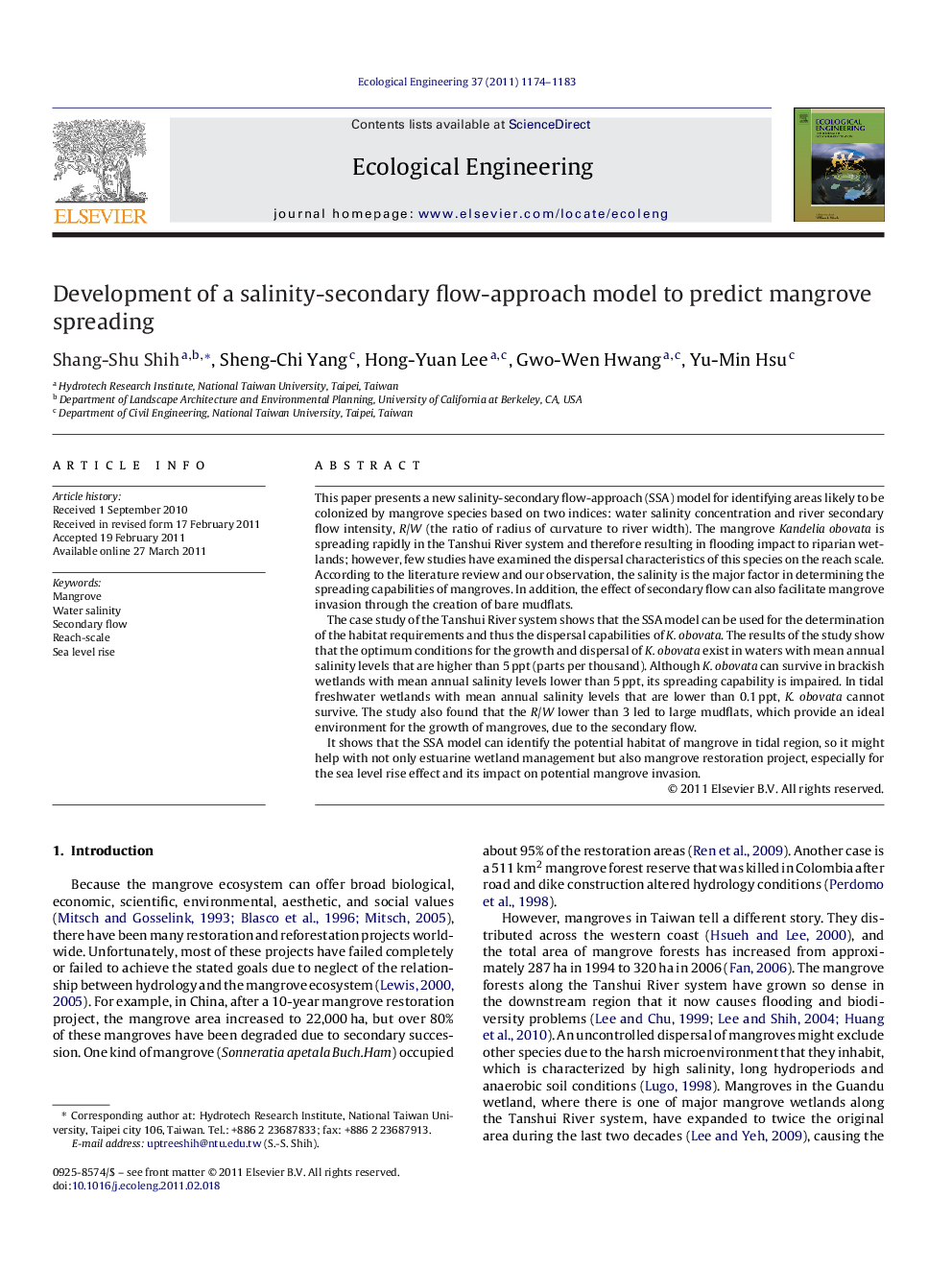| Article ID | Journal | Published Year | Pages | File Type |
|---|---|---|---|---|
| 4390393 | Ecological Engineering | 2011 | 10 Pages |
This paper presents a new salinity-secondary flow-approach (SSA) model for identifying areas likely to be colonized by mangrove species based on two indices: water salinity concentration and river secondary flow intensity, R/W (the ratio of radius of curvature to river width). The mangrove Kandelia obovata is spreading rapidly in the Tanshui River system and therefore resulting in flooding impact to riparian wetlands; however, few studies have examined the dispersal characteristics of this species on the reach scale. According to the literature review and our observation, the salinity is the major factor in determining the spreading capabilities of mangroves. In addition, the effect of secondary flow can also facilitate mangrove invasion through the creation of bare mudflats.The case study of the Tanshui River system shows that the SSA model can be used for the determination of the habitat requirements and thus the dispersal capabilities of K. obovata. The results of the study show that the optimum conditions for the growth and dispersal of K. obovata exist in waters with mean annual salinity levels that are higher than 5 ppt (parts per thousand). Although K. obovata can survive in brackish wetlands with mean annual salinity levels lower than 5 ppt, its spreading capability is impaired. In tidal freshwater wetlands with mean annual salinity levels that are lower than 0.1 ppt, K. obovata cannot survive. The study also found that the R/W lower than 3 led to large mudflats, which provide an ideal environment for the growth of mangroves, due to the secondary flow.It shows that the SSA model can identify the potential habitat of mangrove in tidal region, so it might help with not only estuarine wetland management but also mangrove restoration project, especially for the sea level rise effect and its impact on potential mangrove invasion.
